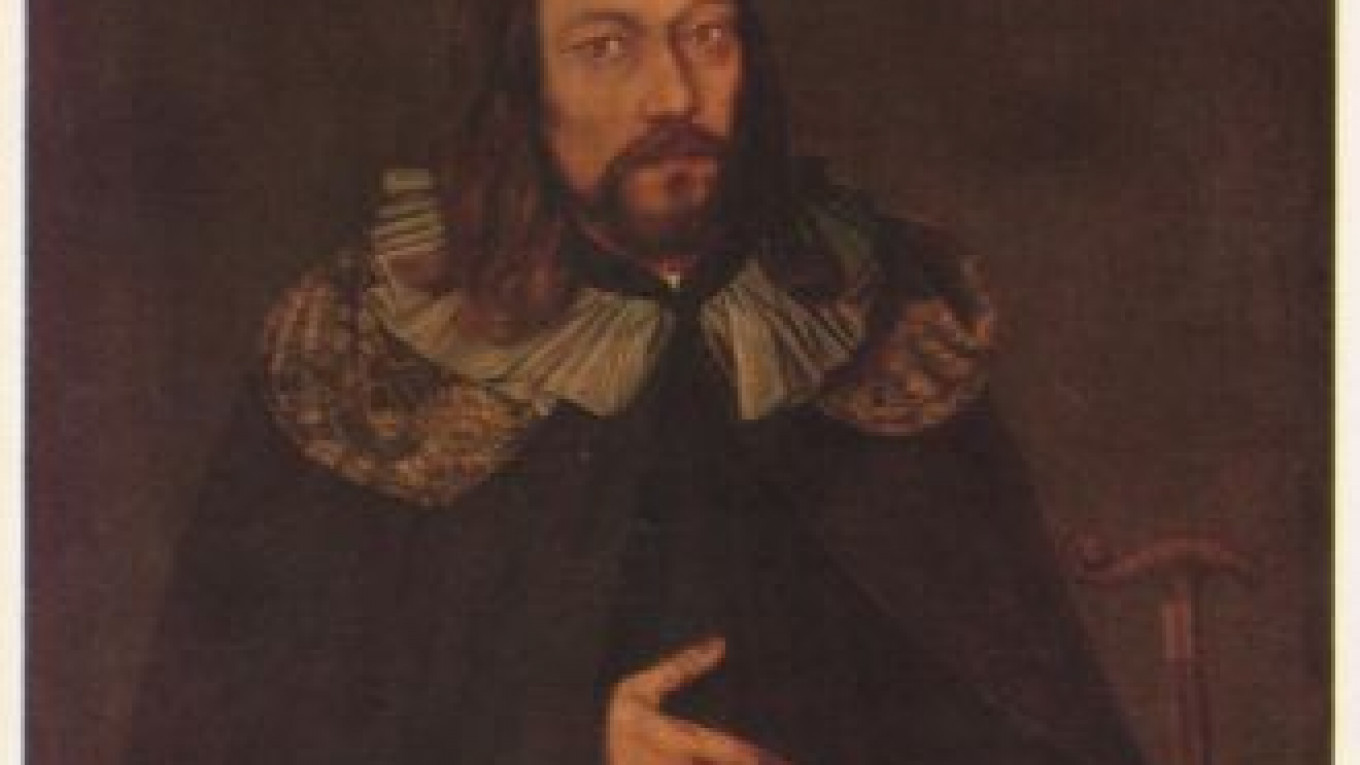ST. PETERSBURG — "Unknown artist — Portrait of an unknown man," is one of the captions at a new exhibit in the Benois wing of the State Russian Museum in St. Petersburg. As a rule, art exhibits are devoted to prominent artists likely to attract big crowds, but the new exhibit at the Russian Museum — titled "Unknown Artist" — defies this logic: It is devoted solely to paintings and sculptures by unknown artists from the 17th- to 19th-century collections of the Russian Museum.
All museums of the world face the problem that part of their collection remains unattributed. At the Russian Museum, this proportion amounts to about 800 of 15,000 artworks. These are works that are not signed by the artist and which, for various reasons, have failed to be attributed to anyone. In the new exhibit, about 200 of the anonymous works have been made accessible to the public for the first time.
"The fact that they do not have a name does not make them less worthy either of the viewer's attention or of exhibition," Georgy Goldovsky, head of the museum's department of Russian art from the first half of the 18th century to the 19th century, said at a news conference devoted to the opening of the exhibit.
It is no coincidence that the exhibit covers the period from the 17th through the 19th centuries. Artworks from this period were far more likely to remain nameless than 20th-century creations.
"The changes in attitude toward the creation of art and the artist's level of self-awareness have played an important role," Goldovsky said.
The lifeblood of the exhibit is the portrait section. Included among them are what are known in Russian as parsunas, late 17th-century portraits that mark the beginning of European-style Russian painting, but also imperial portraits, portraits of children, merchants, clergymen, artists and members of the military.
"These works belong to the mosaic of Russian art, without which even Bryullov, Aivazovsky or Kandinsky could not have distinguished themselves," Goldovsky said.
Indeed, the exhibit comprises an entire catalogue of the period's styles. Aside from portraits, it also features allegories, genre painting, historical painting, paintings of St. Petersburg, and a handful of sculptures.
This may sound as though the artworks on display are primarily of historical value rather than high artistic value in themselves, and indeed, it is assumed that they are mostly not the work of some unidentified master, but of amateurs who took occasional lessons at the academy. The styles rarely seem as distinct as say, those of an Andrei Matveyev or Ivan Vishnyakov in the portrait rooms of the museum's permanent collection.
The Romanov ladies gaze down at the viewer as if from other famous portraits, the members of the military display their badges, and the merchants their respective insignia, while the children are depicted as adults in miniature with blase facial expressions and violins, books, spears or puppies.
But the truth is that there are also treasures to be found among these mystery works, starting with the oldest exhibit, the "Group Portrait of the Members of a Delegation to England in 1662," a harmoniously composed trio of ambassadors. The late 17th-century also saw the creation of the famous Transfiguration Series, which features uniquely ironical, almost grotesque parsunas of Peter the Great's associates painted by partly unknown artists.
In the allegory section, a signboard of the Main Joint Irkutsk American Company dating from the late-18th century captures viewers' attention, while a gem in the interiors section is the multi-layered painting "Reflection in the Mirror" from the second half of the 19th century. The "Portrait of an Architect" is a skillful example in the artists' portraits section.
Even the children's portraits, though regarded as the work of non-professionals, contain paintings such as the "Portrait of a Boy in a Red Shirt with a House of Cards on the Table" or the "Portrait of a Boy with a Mirror" contemplating his painted mustache, which captivate the viewer with their close observation and subtlety.
Apart from such individual jewels, the exhibit excels in the questions it raises. Why do we generally attribute so much importance to the names of the artist of paintings? Is it because the personality of the artist is essential to our understanding of the painting? Or is that a fairy tale written by the art market? In this exhibition, the nameless artworks are grouped together by time, subject and style, a method that recalls art theorist Heinrich Woelfflin's idea to construe an "art history without names," based only on artistic trends.
What is beyond doubt is that everyone who prefers to look at the artworks themselves rather than at the captions beneath them will find something in this exhibition to inspire them.
"Unknown Artist" runs through Oct. 8 in the Benois Wing of the Russian Museum, 4 Inzhenernaya Ulitsa. Metro Nevsky Prospekt. St. Petersburg. Tel. (812) 595-4248.
Related articles:
A Message from The Moscow Times:
Dear readers,
We are facing unprecedented challenges. Russia's Prosecutor General's Office has designated The Moscow Times as an "undesirable" organization, criminalizing our work and putting our staff at risk of prosecution. This follows our earlier unjust labeling as a "foreign agent."
These actions are direct attempts to silence independent journalism in Russia. The authorities claim our work "discredits the decisions of the Russian leadership." We see things differently: we strive to provide accurate, unbiased reporting on Russia.
We, the journalists of The Moscow Times, refuse to be silenced. But to continue our work, we need your help.
Your support, no matter how small, makes a world of difference. If you can, please support us monthly starting from just $2. It's quick to set up, and every contribution makes a significant impact.
By supporting The Moscow Times, you're defending open, independent journalism in the face of repression. Thank you for standing with us.
Remind me later.


